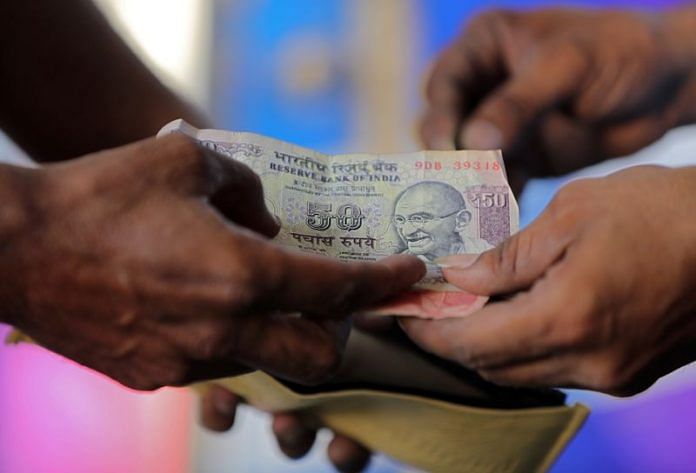By Jaspreet Kalra
MUMBAI (Reuters) – The Indian rupee edged higher on Tuesday, unable to benefit much from the Reserve Bank of India’s strong intervention to blunt the effect of heightened interbank dollar demand.
The rupee was at 86.54 as of 10:40 a.m. IST, up only marginally from its close at 86.5750 in the previous session.
The RBI, traders said, likely sold dollars aggressively via state-run banks, just prior to the opening of the local spot market, amid strong interbank dollar demand spurred by the maturation of positions in the non-deliverable forwards (NDF) market.
The rupee’s 1-month implied volatility, a gauge of future expectations, rose to a 16-month peak of 4% on the day.
The currency had weakened to its all-time low of 86.5825 on Monday and logged its worst one-day decline since February 2023, hurt by a surging dollar and outflows from local equities.
Foreign investors have net sold more than $4 billion worth of local stocks and bonds over January so far.
On the day, though, an uptick in most Asian peers and dollar offers from foreign banks aided the rupee slightly, a trader at a state-run bank said.
“Some mild inflows seem to be present but demand (for USD) is strong enough to counter their impact,” the trader said.
The dollar index was up 0.1% at 109.6, hovering near a two-year peak, while Asian currencies were 0.1% to 0.3% higher.
“We remain cautious on the INR and see the RBI’s FX policy turning less interventionist and allowing INR to adjust weaker,” MUFG Bank said in a note.
Investors now await the release of U.S. wholesale and consumer price inflation data due on Tuesday and Wednesday, respectively, for cues on the path of U.S. monetary policy, which, in turn, affects the dollar.
(Reporting by Jaspreet Kalra; Editing by Savio D’Souza)
Disclaimer: This report is auto generated from the Reuters news service. ThePrint holds no responsibility for its content.




